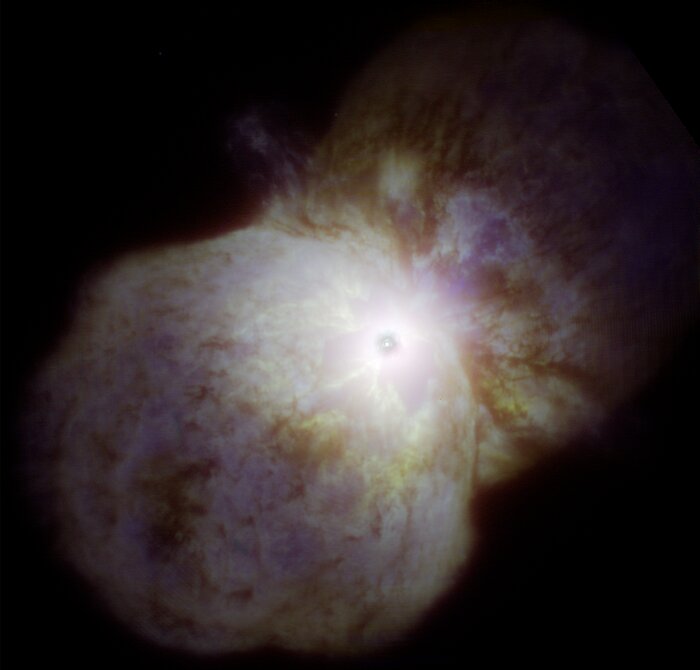Eta Carinae Homunculus Nebula
Eta Carinae as imaged by the Gemini South telescope in Chile with the Near Infrared Coronagraphic Imager (NICI) using adaptive optics to reduce blurring by turbulence in the Earth’s atmosphere. In this image the bipolar lobes of the Homunculus Nebula are visible with the never-before imaged “Little Homunculus Nebula” visible as a faint blue glow, mostly in the lower lobe. The Butterfly Nebula is visible (region circled) as the yellowish glow with dark filamentary structure close to, and mostly below/left, of the central star system (the central star system appears as a dark spot due to the coronagraphic blocking (occulting) disk used to eliminate the star’s bright glare). See Image Release for details Technical Details: This image is a color composite using three infrared filters: [Fe II] (1.644 micron) – blue layer; H2 2-1 S(1) (2.2465 micron) – green layer; Br(gamma) (2.1686 micron) – red layer. The field of view for the image is 16.0 x 15.4 arcseconds and is oriented with north up and east to the left.
Credit:International Gemini Observatory
About the Image
| Id: | gemini1001a |
| Type: | Observation |
| Release date: | Jan. 4, 2010, 8 p.m. |
| Related releases: | gemini1001 |
| Size: | 898 x 859 px |
About the Object
| Name: | Eta Carinae |
| Constellation: | Carina |
| Category: | Nebulae |
Wallpapers
Coordinates
| Position (RA): | 10 45 3.77 |
| Position (Dec): | -59° 41' 4.43" |
| Field of view: | 0.27 x 0.25 arcminutes |
| Orientation: | North is 0.1° left of vertical |
Colors & filters
| Band | Wave-length | Tele-scope |
|---|---|---|
| Infrared Fe II | 1.644 μm | Gemini South NICI |
| Infrared H2 2-1 S(1) | 2.246 μm | Gemini South NICI |
| Infrared Br-gamma | 2.168 μm | Gemini South NICI |

